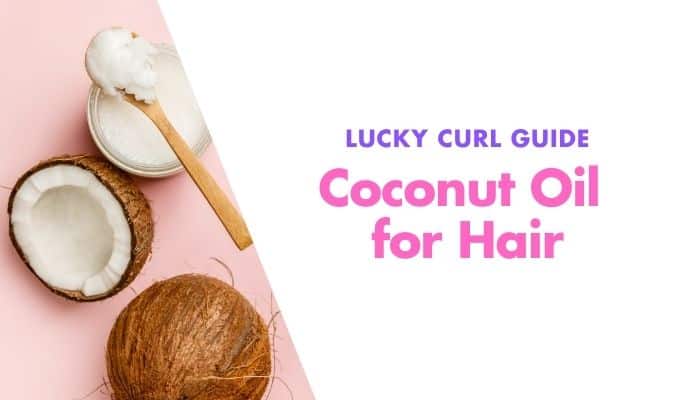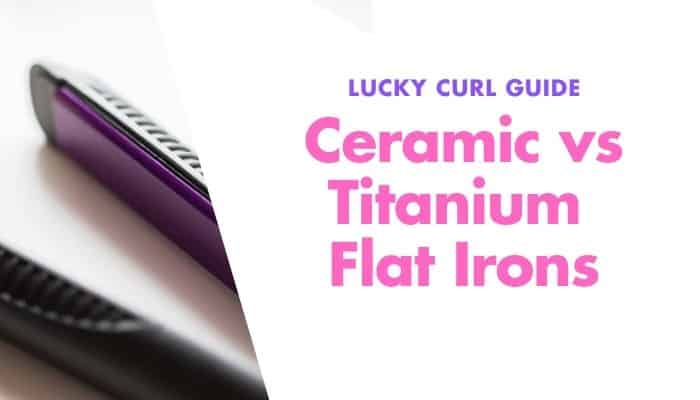Straightening your hair using hot styling tools is time-consuming but worth it for women who want a sleek mane. That said, I know a lot of people can’t stand styling their hair everyday and are looking for a longer-lasting solution.
If you want to take it to the next level and save time and energy, you may be interested in Japanese hair straightening. It’s a permanent way to get your locks pin-straight and banish curls forever–or at least until your hair grows out.
What is Japanese Hair Straightening?
Japanese hair straightening, also known as thermal reconditioning or definitive straightening, is a permanent hair straightening method for curly or wavy hair.
The treatment originated in Japan in the 90s, hence the name. Japanese hair straightening spread like wildfire in the US in the 2000s before Brazilian treatments came into vogue. After reports that carcinogens were used in Brazilian straightening, its popularity lessened and people switched to thermal reconditioning to get straight hair.
Japanese hair straightening is famed for its ability to transform your hair from curly to pin straight in less than a day. It works by altering the structure of your hair for good. Just like a permanent dye job, thermal reconditioning is irreversible and you have to wait until the straight hair grows out to regain your former hair texture.
During the treatment, a solution is applied to the hair which dissolves the bonds. These bonds are responsible for preserving the shape of the hair. Once they are broken down, the waves and curls flatten. Voila, straight hair!
After the solution is washed out, your hair is conditioned and mechanically straightened. Then, a neutralizer is applied to make sure the straight hair is locked in.
Japanese Hair Straightening: Frequently Asked Questions
How long does it last?
The effects of Japanese hair straightening may last for around half a year, depending on your hair type. Brazilian methods last for half the time, which explains why Japanese straightening is a more compelling option for some people. It’s a longer-lasting straightening method than Brazilian treatments.
Is Japanese hair straightening bad for your hair?
Despite the popularity of Japanese hair straightening, the process has attracted controversy. Due to the extreme stress it places on the hair, it takes an expert to safely straighten hair without damaging it irreparably. Not all salons offer Japanese hair straightening due to this risk. In the wrong hands, customers may go home with damaged, fried, or thinned out hair.
You have to go to a reputable salon with stylists that know what they’re doing. It’s highly recommended to make a consultation first with your salon of choice to discuss your hair history and whether the treatment is suitable for you. I suggest you take it up with the pros first before you decide to take the leap.
How much does it typically cost?
The price of a Japanese hair straightening treatment varies from salon to salon. The cost also depends on your location, length, density, and condition of your hair, such as whether it’s been color treated or not.
You can have your hair straightened for as low as $300 to as high as $1000, depending on the area and salon. On average, a Japanese hair straightening treatment costs between $400 to $800.
How long does the treatment take?
A Japanese hair straightening session will take a long time, even in the hands of an expert. Expect to sit on the salon chair for at least four hours and up to eight hours. The length of the process, of course, depends on the texture and length of your hair. To manage expectations, talk to your hairstylist.
How often can you get Japanese hair straightening?
You can have your hair touched up after four to six months to smooth out the formation of new curls. The touch ups don’t take as long as the initial treatment and are also less expensive. Even so, you have to consider the health of your hair. If you have thick, curly hair, you can have it straightened up to three times a year.
Japanese Hair Straightening vs. Brazilian Blowout vs. Keratin Treatment
A Brazilian hair treatment, also known as a keratin treatment, is a semi-permanent hair straightening method that uses formaldehyde, keratin, and conditioners. Keratin treatments don’t last as much as Japanese straightening. The hair returns to its former state after three to six months.
The effects of a keratin treatment are also slightly different. It will soften, not completely straighten, curls. A keratin treatment can also reduce frizz and keep hair shiny and healthy.
A Japanese straightening treatment will not eliminate frizz, in comparison, but it alters the inside of the strands, instead of just coating the hair cortex, like in keratin treatments. This results in straight hair that lasts longer.
A Brazilian blowout is similar to a keratin treatment and uses formaldehyde and other chemicals. It smoothens the hair and keeps it frizz-free. Both procedures make hair shiny and reduce blow dry time.
However, a Brazilian blowout will retain your natural hair texture and will last for around three months.
A Brazilian blowout and keratin treatment are conditioning treatments so they’re safe. A keratin treatment is more nourishing and gentler than a Brazilian blowout.
How does it work?
1) Consultation
A word of caution: always consult a specialist before going for a Japanese straightening treatment. You need to consider your hair type because this treatment works best on healthy strands. If your hair is thinned out or damaged, placing it under extensive heat and chemical exposure will make it look worse.
You also need to pick an experienced professional to do the procedure. The wrong stylist will wreak havoc on your hair and even cause it to thin out. A good hairstylist will assess your hair history, hair type, dryness and damage level.
2) Cleansing
The first treatment step is the cleanse. The hair will be washed with a gentle shampoo to prep the strands for the intensive treatment and rinsed out with warm water.
3) Pre-Treatment
Water is sprayed into the hair and a heat protectant is applied to prepare the hair and scalp for the solution. This is a time-consuming step because the heat protective gel is distributed to small sections at a time.
4) Solution Application
The star of the show is the solution. It usually comes in gel form. This potent chemical will break down protein bonds to straighten the hair. It needs to be quickly and evenly distributed onto the hair.
Afterward, a piece of plastic is wrapped around the base of the hair which serves as a barrier that protects the roots from the rest of the strands.
The solution needs to soak in for a few minutes. It can be left on the hair for an hour, depending on how curly the hair is. A strand test may also be performed to check if the hair can undergo the next steps in the procedure.
5) Rinsing
Next, the solution is washed out. The hair must be treated very gently at this stage. It will be dried with a towel and slowly detangled with as much care as possible.
6) Hair Ironing
The strands are blow dried to prepare it for the flat ironing step. It will be kept a little damp and then straightened with a flat iron set to a high temperature. This is a lengthy and labor-intensive process that may require two pairs of hands.
7) Neutralizer Application
Now that the locks are straightened by the flat iron, a pH-balancing neutralizer is applied to the hair. After five minutes of leaving it on the hair, the neutralizer is rinsed out. Then, a conditioner is distributed on the mane. The type of conditioner depends on the needs or state of the hair.
8) Blow Drying
Finally, we reach the end of the straightening process. Mineral water and a cream is applied and the hair is blow dried following the grain of the hair cuticle. This direction preserves the shape and shine of the strands.
9) Finishing Touches
A bit of ironing may be done to make the hair look as sleek as possible. For the next 24 to 72 hours, the hair needs to be kept dry.
What hair types is it suited for?
Japanese hair straightening is best for:
- All hair types, provided that the hair is healthy and resilient
- People with wavy hair or loose curly hair
- Curly hair with tight coils (type 4 hair) but touch-ups are needed
Japanese hair straightening is NOT for:
- Any hair type that is vulnerable, damaged, brittle, or compromised
- African hair types
- Pregnant or breastfeeding women
The following hair types are also not good candidates for Japanese hair straightening.
- Color-treated hair
You may have to stay away from the treatment if your hair has been color-treated in the past 6 months. You may encounter issues during thermal reconditioning because it’s an intensive process. Color-depositing chemicals will take away much-needed protein that shields your hair from excessive damage.
- Chemically treated hair
For the same reasons, you are not a good candidate for Japanese hair straightening if your hair has been chemically treated. Another intense chemical process is like a double whammy that will further destroy your hair. Chemically-treated hair is too vulnerable to withstand the treatment’s effects.
- Damage-prone hair
Damaged hair also needs to stay away from Japanese straightening, at least until the condition improves. If you are experiencing hair loss, breakage, dryness, or dandruff, you need to focus on bringing back the health of your hair before considering the treatment.
Half a year to a year of abstaining from any color or chemical treatments will do wonders to prepare your hair. You may also change your diet to include more omega 3 oils, exercise regularly and have regular restful sleep. Heat styling also needs to be reduced.
How to Care for Your Hair Post-Treatment: Dos and Don’ts
Here are some after care tips to protect your hair post-procedure and get the best results.
- Do not get your hair wet for 3 days after the treatment. You should also avoid using hot tools such as a flat iron or hot air brush.
- Do not subject the hair to any form of moisture, such as rain, sweat, showers, or pool water.
- Do not touch the hair or put it up in braid or ponytail. Let your hair be so the neutralizer can finish its magic.
- For 72 hours after straightening, do not use hair accessories such as clips and bands. Even tucking the hair behind the ears may alter the shape of the hair.
- Use a gentle and moisturizing shampoo that’s free from strong chemicals.
- Do not use a blow dryer for several days.
- You should also not color or have your hair chemically-treated for 2 months after the treatment.
- If your curls start coming in at the roots, you may have them touched up 4 to 6 months after the initial treatment.
- Your hair needs SPF to prevent UV damage. Get creative and use hats to further protect the tresses from the sun.
- Take care of your hair by doing a weekly protein-rich deep treatment.
Summary
At the end of the day, the choice to get a Japanese straightening treatment is up to you. Knowledge is powerful so make sure you know the ins and outs of the process before permanently altering your curls.
It can be a very satisfying and safe procedure when done right and it will save you the hassle of constantly ironing your hair. Japanese hair straightening can drastically cut down your morning routine and allow you to sleep in. Sometimes, that’s enough of a motivation for anyone with stubborn curls.



